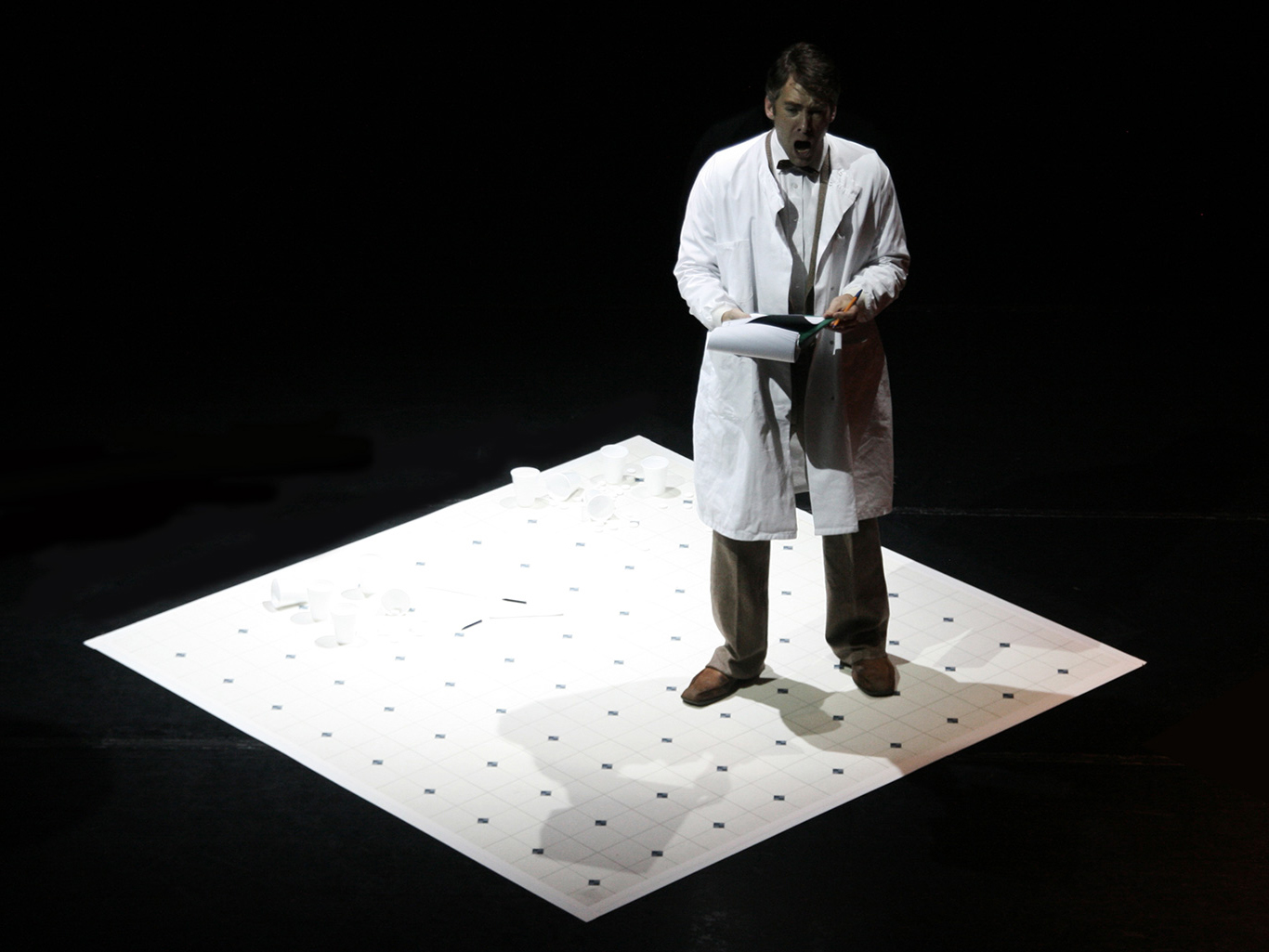The Rosenhan Experiment
2007, 2013
- Words
- Tim Benjamin after David Rosenhan
- Composer; Director (2013)
- Tim Benjamin
- Director (2007)
- Arne Muus
- Designer (2013)
- Lara Booth
- Music Director (2013)
- Ektoras Tartanis

2007, 2013
“If sanity and insanity exist, how shall we know them?
The question is neither capricious nor itself insane.”
David L. Rosenhan, On Being Sane In Insane Places, Science, Volume 179, January 1973
The “Rosenhan Experiment” was a famous investigation into the validity of psychiatric diagnosis conducted by David Rosenhan in 1972. It was published in the journal Science in 1973 under the title “On Being Sane In Insane Places”.
Rosenhan’s study consisted of two parts. The first involved the use of healthy associates or “pseudopatients”, who briefly simulated auditory hallucinations in an attempt to gain admission to psychiatric hospitals in the United States. The second involved asking staff at a psychiatric hospital to detect non-existent “fake” patients. In the first case hospital staff failed to detect a single pseudopatient, in the second the staff falsely detected large numbers of genuine patients as impostors. The study is considered an important and influential critique of psychiatric diagnosis.
The study concluded, “It is clear that we cannot distinguish the sane from the insane in psychiatric hospitals”, and also illustrated the dangers of depersonalisation within psychiatric institutions. It recommended the use of community mental health facilities that concentrated on specific problems and behaviours rather than psychiatric labels, and also recommended education to make psychiatric workers more aware of the social psychology of their facilities.
Our opera The Rosenhan Experiment (first produced in 2008, then revived in 2013) takes as a starting point Rosenhan’s famous paper: all the words in our opera are taken directly from the paper, abridged, and split between two characters (performed by one person), Rosenhan and a Patient.
“An excellent work, performed convincingly. There was a first-rate sense of ensemble ... and Benjamin used the forces available to full effect … mention should also be made of the brilliant piano writing. A memorable performance, which appealed musically, dramatically and intellectually”
Seen and Heard
Perhaps uniquely, The Rosenhan Experiment features two characters Rosenhan and a Patient, performed by just one singer, a counter-tenor. Whenever the performer speaks, he is portraying Rosenhan, and whenever he sings, he is the Patient.
This device clearly split the role into the two characters, but it also allows the single performer to give a convincing portrayal of schizophrenia - the very condition Rosenhan was investigating.
The sense of dual personality is reinforced in the selection of the counter-tenor voice (falsetto sung vs male spoken voice), and in the design of our 2013 production, which split the stage into two distinct areas (corresponding to Rosenhan's study and the Patient's asylum).
“Brilliant musicality, an immense display of technical prowess ... an immensely challenging piece and something I'd like to hear again”
The Gazette & Herald